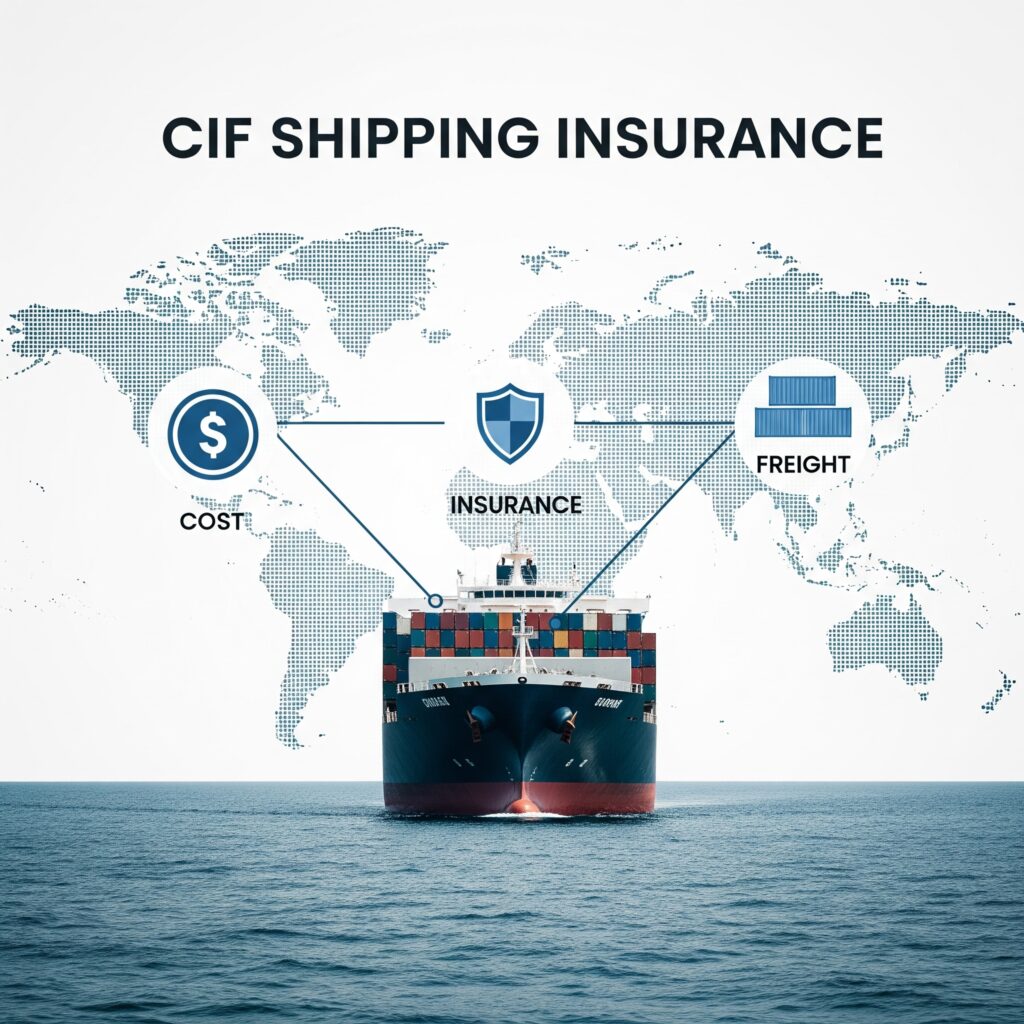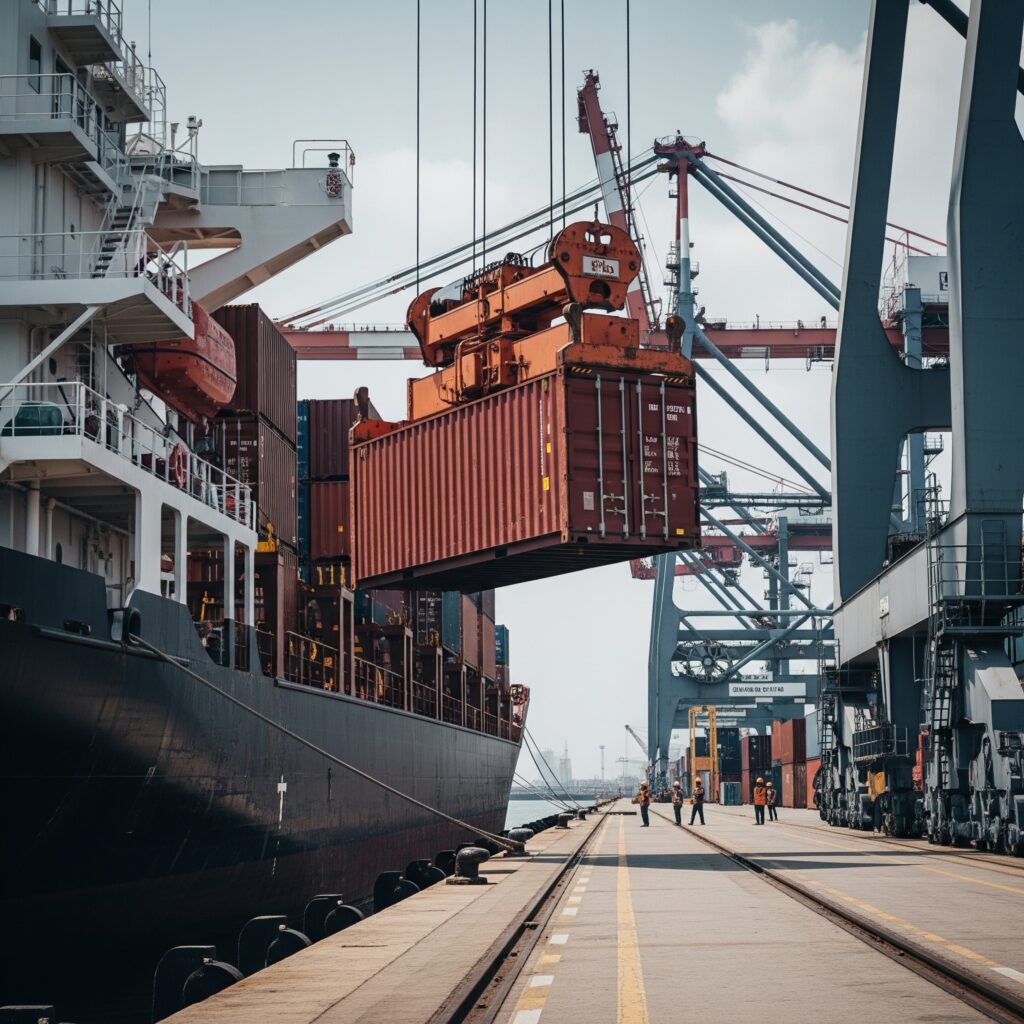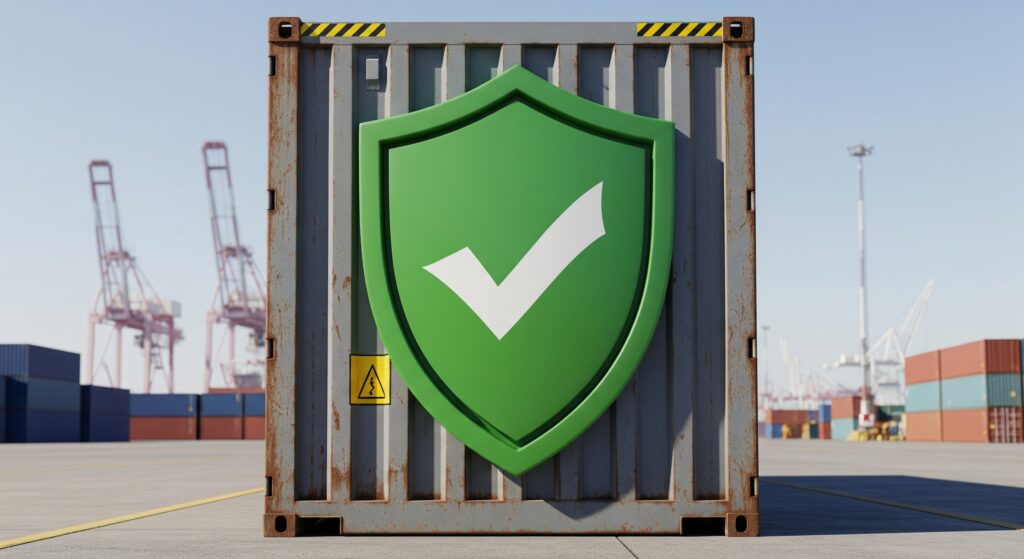What is the CIF Incoterm and How Does It Affect You?
Whether your Canadian business is buying or selling goods on the global market, you’ve undoubtedly navigated the “alphabet soup” of shipping terms: FOB, EXW, DDP, and one of the most common, CIF. Here in mid-2025, with global supply chains requiring more precision and clarity than ever, a simple misunderstanding of these three-letter acronyms can jeopardize an entire transaction, leading to financial loss, damaged business relationships, and logistical nightmares. These terms, officially known as Incoterms®, are the legally binding rules that define who pays for what and, most critically, who carries the risk during a shipment’s long and perilous journey.
Among these terms, CIF (Cost, Insurance, and Freight) is frequently used but widely misunderstood. On the surface, it appears to be a convenient, all-in-one solution where the seller handles the major logistics. However, this apparent simplicity hides significant risks and responsibilities within the agreement that can negatively impact both the buyer and the seller if not properly understood and managed.
This guide will demystify the CIF Incoterm for you. We will move beyond a simple dictionary definition to provide a practical breakdown of what this term means for any business, regardless of which side of the transaction you are on. By the end, you will understand the standard responsibilities, be able to identify the critical “insurance gap” that CIF creates, and know how to ensure a shipment is truly protected from door to door.
A Breakdown of CIF: Cost, Insurance, and Freight
CIF is an Incoterm used exclusively for goods transported by sea or inland waterway. When a sales contract is agreed upon with CIF terms, it dictates that the seller is responsible for three distinct elements up to the point of the goods arriving at the buyer’s destination port.
Cost
This is the most straightforward component. It refers to the price of the goods themselves, as agreed upon in the sales contract between the seller and the buyer.
Insurance
This is where the first major misunderstanding often occurs. Under CIF rules, the seller is obligated to obtain and pay for an insurance policy for the goods while they are in transit. However, the Incoterms rules only require them to purchase a minimum level of coverage. This is typically a basic, “Named Peril” policy (such as Institute Cargo Clauses ‘C’), which only covers losses from a small list of specific events, like fire, sinking, or collision of the vessel. It often does not cover many common risks like theft, water damage from other sources, or accidental damage during handling.
Freight
The seller is also responsible for arranging and paying for all freight charges necessary to transport the goods from their location to the buyer’s named port of destination. For a Canadian business, this would be a port like Vancouver, Montreal, or Halifax. It is crucial to remember that this responsibility covers only the main sea voyage and does not include any domestic transport within Canada.
The Transfer of Risk: The Most Misunderstood Part of CIF
While the seller pays for the insurance and freight all the way to the destination port, the legal transfer of risk from the seller to the buyer happens much earlier in the journey. This is the single most important concept for both parties to understand.
Think of it like a relay race. The seller is the first runner, carrying the baton (the risk for the goods). They are responsible for getting it safely to the exchange zone. In a CIF transaction, that exchange zone is the rail of the ship at the port of origin. The moment the goods are loaded onto the vessel, the seller has legally “passed the baton.”
From that point forward, the buyer is the runner in the race. Even though the seller has paid for the track ahead (the ocean voyage), if the buyer “drops the baton” (i.e., the goods are lost or damaged at sea), it is the buyer’s responsibility to deal with the consequences and file a claim against the minimal insurance policy the seller purchased. This early transfer of risk creates a complex situation with duties and potential pitfalls for both sides of the agreement.

A Tale of Two Perspectives: Risks & Responsibilities for Buyer and Seller
To fully grasp the implications of CIF, it’s essential to look at the agreement from both sides of the table.
For the Buyer: 3 Critical Responsibilities You Inherit
If you are a Canadian business importing goods on CIF terms, your work begins the moment the ship is en route. You must be prepared to handle these three key responsibilities:
- Managing the Destination Port: The seller’s involvement ends when the ship docks. All subsequent processes and costs are yours. This is a multi-step undertaking that includes hiring a customs broker to manage import declarations, paying all applicable duties and taxes (GST/HST), and coordinating with the port authority for the release of your container. Any delays or errors in this process can lead to costly port storage (demurrage) fees, which are entirely your responsibility.
- Arranging and Paying for Domestic Transport: The “Freight” in CIF only covers the journey to the Canadian port. It is up to you to arrange and pay for the domestic transportation to get the goods from that port to your final destination. Whether it’s a warehouse in Brantford, Ontario, a retail store in Calgary, or a manufacturing plant in Quebec, this “final mile” journey by truck or rail is a significant logistical and financial task that you must manage.
- Owning the “Insurance Gap”: This is your greatest financial exposure. The minimum insurance policy provided by the seller typically expires once the goods are safely offloaded at the port. This means that for the entire domestic journey—often the part of the trip with the highest risk of theft, traffic accidents, and handling damage—your multi-thousand-dollar investment is effectively uninsured. You are relying solely on the carrier’s limited liability, which, as we know, is completely inadequate.
For the Seller: 3 Strategic Opportunities to Consider
If you are a Canadian business selling goods internationally on CIF terms, understanding these nuances is key to protecting your business and building strong customer relationships.
- The Risk of Disputes and Damaged Relationships: Even if you are legally in the right, what happens when your buyer’s shipment is damaged during transit and the minimum insurance you purchased doesn’t cover it? The result is an unhappy customer, a potential dispute, and a damaged business relationship that can be incredibly costly to repair or replace. A proactive approach to insurance is a form of customer service.
- The Competitive Advantage of Better Coverage: Smart sellers can turn this potential problem into a powerful competitive advantage. Instead of just offering the bare-minimum CIF terms like your competitors, you can offer a “CIF+” or “Premium CIF” option. By telling your buyers, “Our price includes a comprehensive, door-to-door, All Risk insurance policy,” you provide them with peace of mind, eliminate their risk, and give them a compelling reason to choose you over anyone else.
- Simplifying the Process for Your Buyer: An international buyer may not have the local knowledge or contacts to easily arrange for domestic transport and insurance within Canada. By partnering with a platform like ShipSimple, a Canadian seller can easily arrange a seamless, fully-insured, door-to-door shipment for their international clients, making them an easy and attractive partner to do business with.

Closing the Gap: The Universal Principle of Total Insurable Value
Whether you are a buyer looking to protect your investment or a seller looking to provide superior service, the solution is the same: you must ensure the shipment is covered for its true value from its actual start point to its final destination.
This is where the concept of Total Insurable Value comes in. This principle acknowledges that if a shipment is lost, the financial loss is not just the value of the product; it’s also the non-refundable shipping costs you’ve paid.
The formula is simple: C (Cost of your Cargo) + F (Cost of the Freight) = Your Total Insurable Value
Let’s use an example. You have a shipment of goods valued at $10,000. The total cost for the freight to get it to its destination is $1,500.
- Your Total Insurable Value is $10,000 + $1,500 = $11,500.
This is the amount you need to insure to be made truly “whole” again after a total loss. This principle is universal and applies to all shipping modes. Whether it’s an ocean container, an air freight shipment, or a domestic LTL truck shipment, if the goods disappear, you’ve lost both the product and the money you spent to ship it.
Conclusion: From Understanding to Action
The key takeaway for any business dealing with a CIF transaction is that the standard terms create a significant “insurance gap” that introduces risk and uncertainty for both buyers and sellers. It is a system that, on its surface, seems simple, but in reality, leaves the most vulnerable part of a shipment’s journey unprotected.
The proactive solution for both parties is to move beyond the minimum requirements and ensure comprehensive, All Risk insurance is in place to cover the shipment’s Total Insurable Value from its true origin to its final door. This transforms the agreement from a source of potential conflict into a foundation for a healthy, trusting, and profitable trade relationship.
Understanding these terms is the first step. The next is to take control of your protection. In our next guide, we will provide you with the tools to do just that, diving deeper into the different types of insurance and how to secure the right coverage for your business.
Ready to take control of your shipping and ensure you’re never left exposed?
–> Explore the ShipSimple Platform and Sign Up for Free Today

Additional Resources
- International Chamber of Commerce (ICC) – Incoterms® 2020 Overview
https://iccwbo.org/resources-for-business/incoterms-rules/incoterms-2020/- The ICC is the official body that creates and manages the Incoterms rules. This page provides the most authoritative overview of the rules, including CIF.
- Canadian Border Services Agency (CBSA) – Step-by-Step Guide to Importing Commercial Goods
https://www.cbsa-asfc.gc.ca/import/guide-eng.html- An official guide from the Government of Canada explaining the processes, duties, and taxes involved in importing goods, which are the buyer’s responsibility under CIF.
- Trade Ready – Understanding Incoterms
https://www.tradeready.ca/(Note: Linking to the main domain of this Canadian trade education resource).- A Canadian resource dedicated to helping businesses understand the complexities of international trade, including helpful guides on Incoterms.





